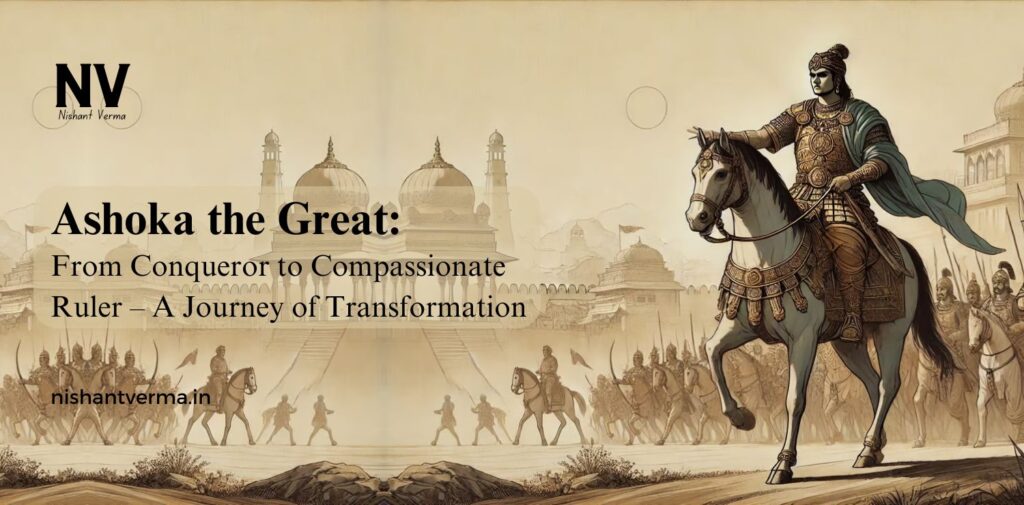Ashoka the Great is one of the most famous and influential rulers in Indian history. His journey from a warrior king to a compassionate and enlightened ruler is not just fascinating, but also offers profound lessons about the power of introspection, change, and moral leadership. This transformation is largely attributed to a pivotal event—the Kalinga War—which radically altered his worldview and led him to embrace Buddhism. But did this shift have a lasting impact on Indian society and its religious landscape? Let’s dive deeper into Ashoka’s life, his conversion to Buddhism, and the consequences this transformation had on the Indian subcontinent, including the long-term effects on Hinduism and the rise of Islam.
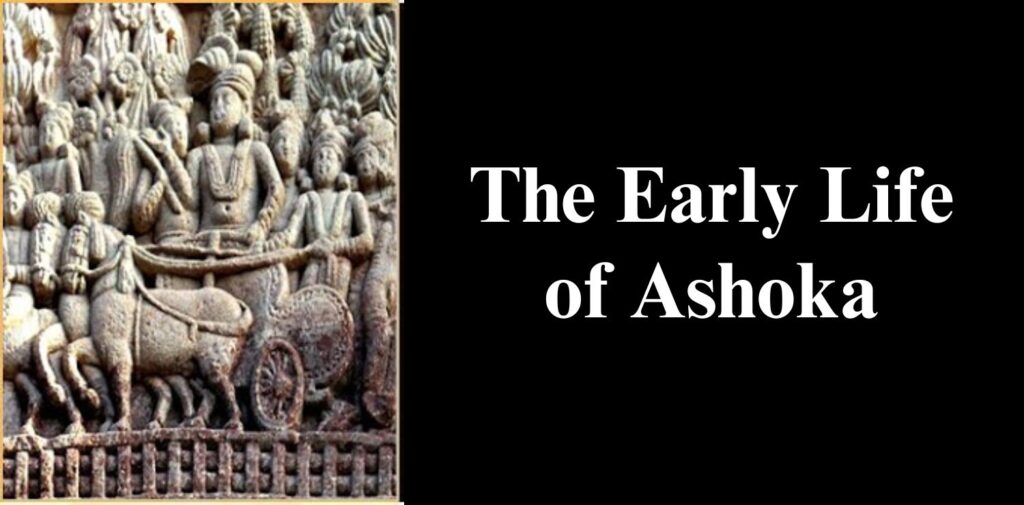
The Early Life of Ashoka
Ashoka was born into the Maurya dynasty around 304 BCE, the grandson of the great Mauryan Emperor Chandragupta Maurya, who founded the Maurya Empire. Ashoka’s early life, however, was far from peaceful. He grew up in the shadow of royal competition, as many of the Mauryan princes fought for the throne. It is said that Ashoka was a strong and ambitious young man, known for his military skill and leadership. As a prince, he was involved in military campaigns, and by the time he became emperor, he had already gained experience in governance and warfare.
Ashoka’s Rise to Power
Ashoka ascended to the throne after the death of his father, Emperor Bindusara. It is believed that his rise was marked by a series of political manoeuvres, including the elimination of rivals. Once in power, Ashoka sought to expand the Mauryan Empire through military conquest, and his kingdom quickly extended from modern-day Afghanistan in the west to Bengal in the east, and from the Himalayas in the north to the Deccan Plateau in the south.
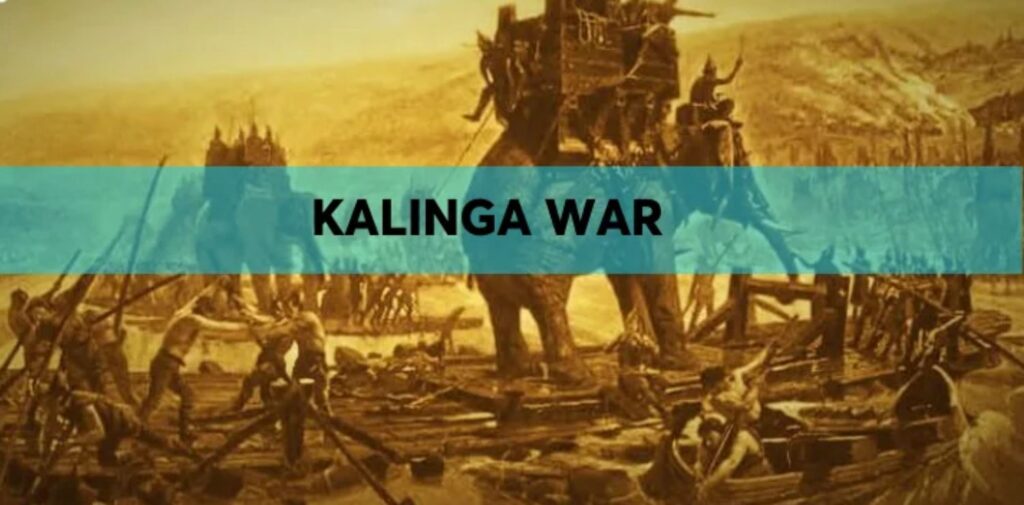
The Kalinga War: A Turning Point
The turning point in Ashoka’s life came when he decided to invade the kingdom of Kalinga, a region that included parts of modern-day Odisha. The Kalinga War, which took place around 261 BCE, was brutal and devastating. Estimates suggest that over 100,000 people were killed, and as many as 150,000 were deported or displaced. The sheer violence of the conflict, combined with the suffering of the people, left Ashoka deeply shaken.
Historical records suggest that after witnessing the aftermath of the Kalinga War—massive death, destruction, and the cries of those affected—Ashoka experienced a profound personal transformation. The horrors of war weighed heavily on his conscience, and he began to question the value of military conquest and the pain it caused. In a moment of deep reflection, Ashoka decided to abandon the path of violent expansion and instead seek peace and compassion.
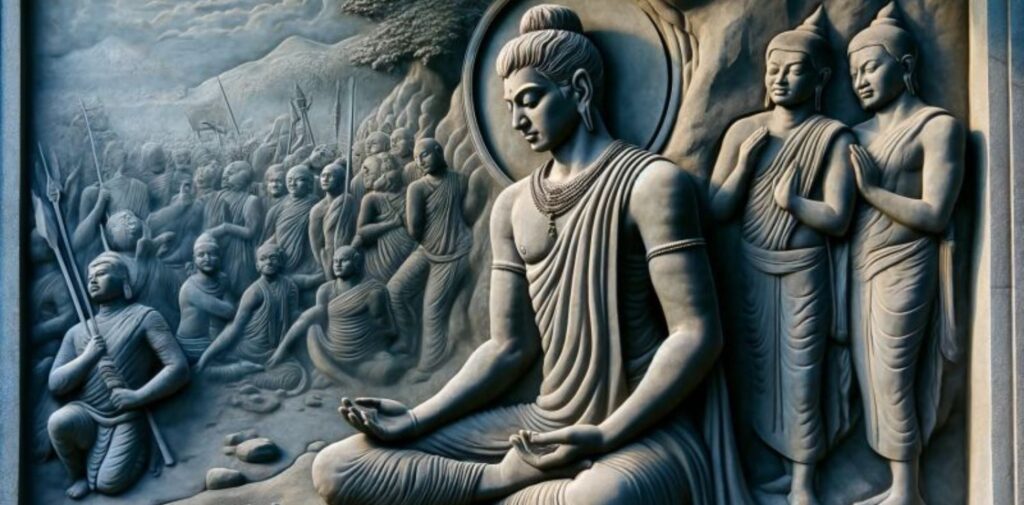
Ashoka’s Conversion to Buddhism
After the Kalinga War, Ashoka embraced Buddhism, a religion that emphasizes peace, non-violence (ahimsa), and compassion for all living beings. His conversion to Buddhism is one of the most significant moments in world history because it marked the beginning of a new era of governance based on moral values rather than military might.
Ashoka’s support for Buddhism was not just personal but also political. He began to promote Buddhist principles across his empire. He established Dhamma (moral law) as the guiding philosophy of his rule. He emphasized values like kindness, tolerance, and respect for all religions. He adopted the title of Dharmashoka (“Ashoka the Righteous”), a ruler who sought to guide his people through moral and ethical governance, rather than through fear or force.
One of Ashoka’s major contributions to Buddhism was the promotion of Buddhist teachings through the construction of rock edicts—inscriptions carved on stone pillars and rocks across the empire. These edicts communicated his moral guidelines, which included promoting non-violence, religious tolerance, and care for animals and the environment. Ashoka also played a key role in spreading Buddhism beyond India, sending missionaries to places like Sri Lanka, Central Asia, and even Southeast Asia.
Ashoka’s Legacy: A New Way of Ruling
Ashoka’s reign became known for peace, prosperity, and moral governance. He reformed many aspects of administration and made significant efforts to improve the lives of his people. He built roads, hospitals, and rest houses for travellers. He also promoted the welfare of his people through various social programs, such as the planting of trees along roads for shade and the promotion of medical care for both humans and animals.
Perhaps one of Ashoka’s most remarkable achievements was his promotion of religious tolerance. Despite being a Buddhist, he supported the freedom of other religions and discouraged the persecution of non-Buddhists. Ashoka’s empire was diverse, and he ensured that his policies embraced this diversity, seeking to foster harmony among different religious communities.
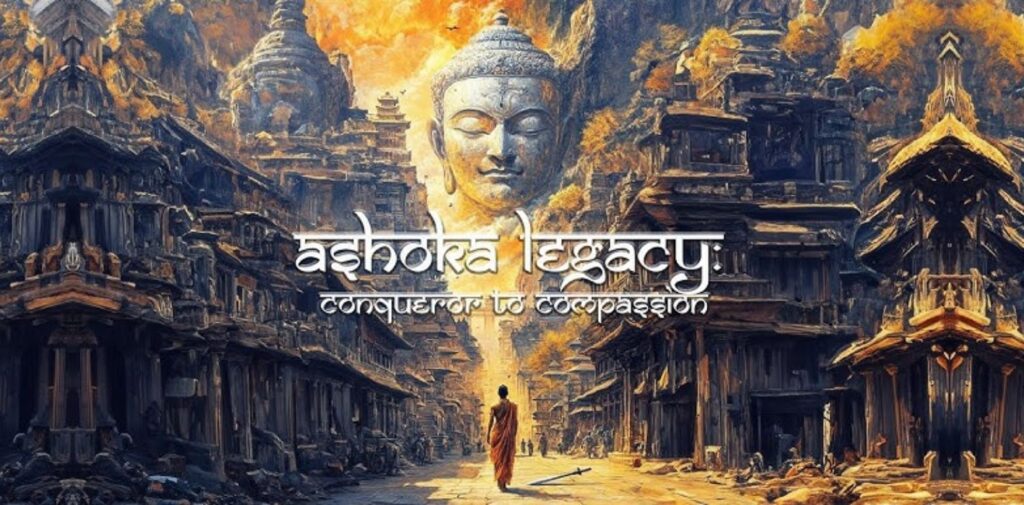
The Downfall of Hinduism After Ashoka: A Complex Shift
While Ashoka’s embrace of Buddhism had profound effects on his empire, it also marked the beginning of a shift in India’s religious landscape. For many centuries, Hinduism had been the dominant religion in the Indian subcontinent. However, the rise of Buddhism, coupled with Ashoka’s support for it, led to a decline in the influence of traditional Hindu practices during Ashoka’s reign.
It’s important to note that Ashoka did not outright reject Hinduism, but he certainly shifted the focus of his empire away from the old Brahmanical traditions. The philosophical and spiritual ideas in Hinduism, especially the rituals, sacrifices, and the hierarchical caste system were less aligned with the non-violent, egalitarian teachings of Buddhism that Ashoka embraced.
This shift in religious patronage was not the sole reason for the decline of Hinduism during Ashoka’s rule, but it did play a role. Hinduism, however, did not disappear—rather, it adapted over time. The next few centuries saw the rise of new movements within Hinduism, such as the Bhakti movement, which emphasized personal devotion to gods and the rejection of rigid rituals.
The Impact of Islam: A New Challenge
Several centuries after Ashoka, India underwent another major religious transformation with the arrival of Islam. From the 7th century onwards, Muslim invaders and later Muslim rulers began to establish their rule in the Indian subcontinent. The Delhi Sultanate (1206–1526) and later the Mughal Empire (1526–1857) saw the spread of Islam in India. The arrival of Islam, with its distinct religious practices and social structures, introduced new challenges to the existing Hindu-Buddhist landscape.
The Muslim conquests in India were often violent and divisive, leading to conflict between the two religious communities. While many Hindus accepted the new faith, many others resisted, leading to social and political tensions that continued for centuries. Over time, the rise of Islam and its political influence further divided the Hindu community, particularly as Islamic rulers often treated Hindus as a subordinated group. This created a complex and sometimes violent relationship between Hinduism and Islam in India.
Conclusion: Ashoka the Great Legacy and Its Long-Term Effects
Ashoka the Great is remembered for his extraordinary transformation from a ruthless conqueror to a ruler committed to peace, morality, and religious tolerance. His embrace of Buddhism and his efforts to promote non-violence and welfare set him apart from other rulers of his time. Although Buddhism saw a decline in India after Ashoka’s death, his reign influenced the spiritual and philosophical atmosphere of India for centuries.
The decline of traditional Hinduism and the rise of Islam in later centuries further complicated the religious dynamics of the Indian subcontinent. The spread of Islam in India introduced new religious and cultural elements that would eventually reshape the region’s political and social structures.
Ashoka’s story, however, serves as a powerful reminder of the capacity for personal growth and the potential for transformative leadership. His reign teaches us that even in times of great conflict and destruction, one can choose the path of peace and compassion. His legacy continues to inspire not just Buddhists, but all who believe in the power of moral governance and the importance of empathy in leadership.

